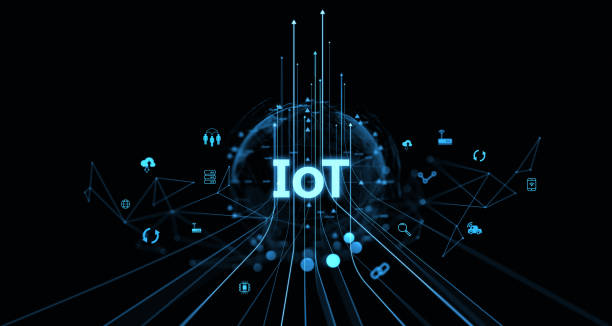
- April 18 2025
- SFI Solution Team
The Role of IoT Data Integration in Smart Agriculture
In recent years, the agricultural sector has experienced a significant digital transformation driven by the Internet of Things (IoT). This shift has improved farming efficiency and opened up new avenues for sustainable agricultural practices. Central to this transformation is the integration of IoT data, which involves gathering, analyzing, and utilizing information from interconnected smart devices to facilitate real-time, data-informed decision-making. In this blog, we will examine the crucial role that IoT data integration plays in smart agriculture and its impact on the future of farming.
What Is Smart Agriculture?
Smart agriculture, also known as precision agriculture, refers to the application of modern technologies—including IoT, artificial intelligence, and machine learning—to monitor, manage, and improve farming operations. Smart agriculture aims to optimize resource use, increase crop yields, and reduce environmental impact through precise data-driven interventions.
The Internet of Things (IoT) in Agriculture
IoT in agriculture involves a network of sensors, drones, GPS devices, smart irrigation systems, and connected farm equipment that collect vast amounts of data. This includes data on :
-
Soil moisture levels
-
Temperature and humidity
-
Crop health and growth patterns
-
Livestock movement and behavior
-
Equipment performance
-
Weather forecasts
However, the real value lies not just in collecting data but in integrating this data into a unified platform that provides actionable insights.
Why IoT Data Integration Matters
1. Centralized Decision-Making
With farms deploying multiple IoT devices, data can become fragmented and difficult to analyze. IoT data integration unifies data from different sources—soil sensors, weather stations, GPS systems—into one dashboard. This centralized approach allows farmers to monitor field conditions in real-time and make informed decisions faster.
2. Enhanced Crop Management
Integrated data helps track every phase of the crop lifecycle. For example :
-
Soil moisture data can trigger automated irrigation systems.
-
Drone imagery can detect pest infestations early.
-
Weather data can inform the optimal time for planting or harvesting.
By combining these data points, farmers can minimize waste and maximize productivity.
3. Efficient Resource Management
Water, fertilizers, and pesticides are costly and impact the environment. IoT data integration enables precision farming, where resources are applied only where and when needed. This ensures:
-
Reduced water and chemical usage
-
Lower operational costs
-
Better environmental sustainability
4. Predictive Analytics and AI
When integrated data is fed into AI algorithms, farms can benefit from predictive analytics. This includes:
-
Forecasting crop yields
-
Predicting disease outbreaks
-
Planning harvest schedules
-
Detecting equipment failures before they occur
These insights lead to proactive, rather than reactive, management strategies.
5. Livestock Monitoring and Management
IoT data integration isn’t limited to crops. It also plays a significant role in livestock farming. Smart collars and RFID tags provide data on animal health, location, and feeding patterns. When integrated into a single system, this data helps farmers monitor herds, detect illnesses early, and ensure animal welfare.
Key Technologies Enabling IoT Data Integration
Several technologies support seamless IoT data integration in agriculture :
-
Cloud computing for scalable data storage and access
-
Edge computing for real-time processing on-site
-
APIs and data connectors to integrate devices and software
-
AI and machine learning to derive insights from complex data sets
-
Blockchain for secure data sharing and traceability
Real-World Applications of IoT Data Integration in Agriculture
Smart Irrigation Systems
Integrated soil moisture sensors and weather forecasts help automatically adjust irrigation levels, saving water and improving crop quality.
Autonomous Tractors and Drones
Data from GPS, cameras, and sensors are integrated to guide autonomous machinery for tasks like seeding, spraying, and harvesting.
Climate-Controlled Greenhouses
IoT sensors monitor temperature, humidity, and CO₂ levels. The integrated data helps adjust ventilation, lighting, and irrigation systems automatically.
Supply Chain Optimization
Post-harvest, integrated data systems track produce from farm to market, ensuring freshness, traceability, and quality compliance.
Challenges in IoT Data Integration
While the benefits are substantial, IoT data integration faces several challenges :
-
Data standardization : Different devices and platforms use different data formats.
-
Connectivity issues : Remote farms may lack stable internet connections.
-
Security concerns : Protecting sensitive farm data from cyber threats.
-
Cost of implementation : Initial investment in IoT infrastructure can be high.
The Future of Smart Agriculture
As technology advances, IoT data integration will become even more seamless, secure, and intelligent. Emerging innovations like 5G connectivity, digital twins, and interoperable platforms will enhance the reliability and scalability of smart farming solutions.
Governments and private sectors are also investing heavily in agri-tech startups, paving the way for widespread adoption of IoT-powered agriculture globally.
Conclusion
IoT data integration is the backbone of smart agriculture. By turning fragmented data into cohesive insights, it empowers farmers to make better decisions, improve efficiency, and embrace sustainable practices. As global food demands rise and climate challenges intensify, integrated smart agriculture systems will be essential in feeding the future.
Whether you’re a farmer, agribusiness owner, or tech enthusiast, understanding and investing in IoT data integration is no longer optional-it’s the future of farming.
Previous Post